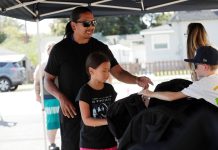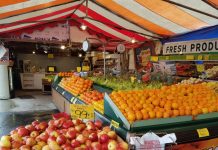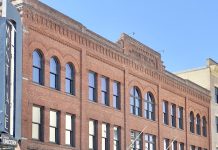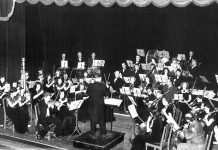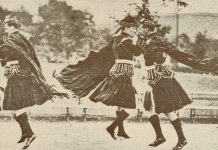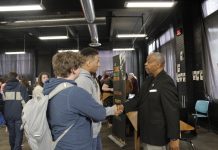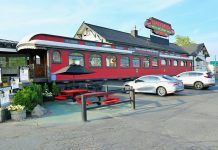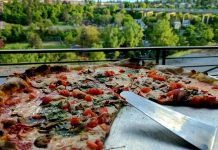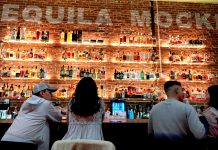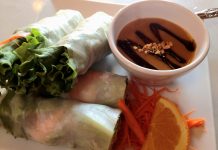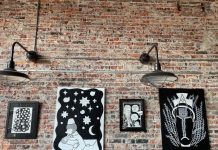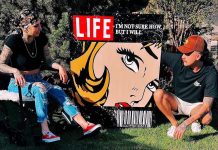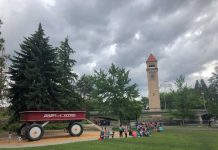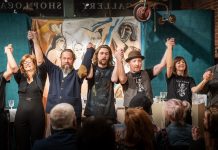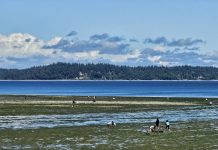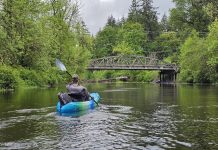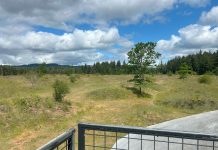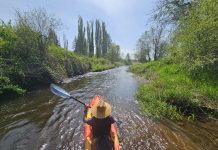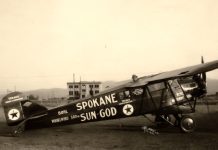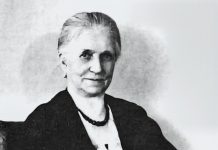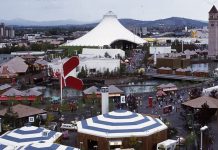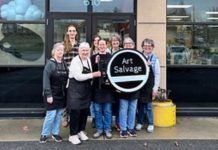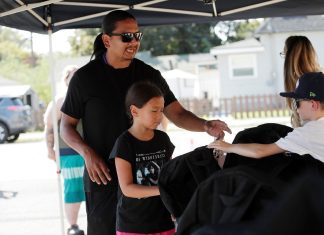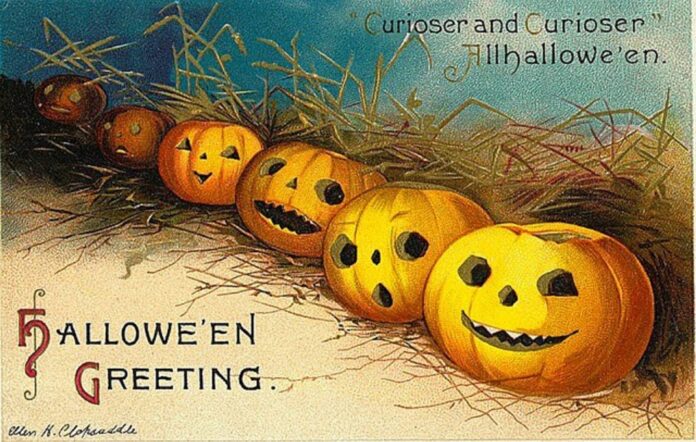
Halloween traces its history far back into the past. By the early twentieth century, the day had become a popular holiday in America. Usually spelled Hallowe’en at the time, a Spokane Halloween looked very different than it does today.
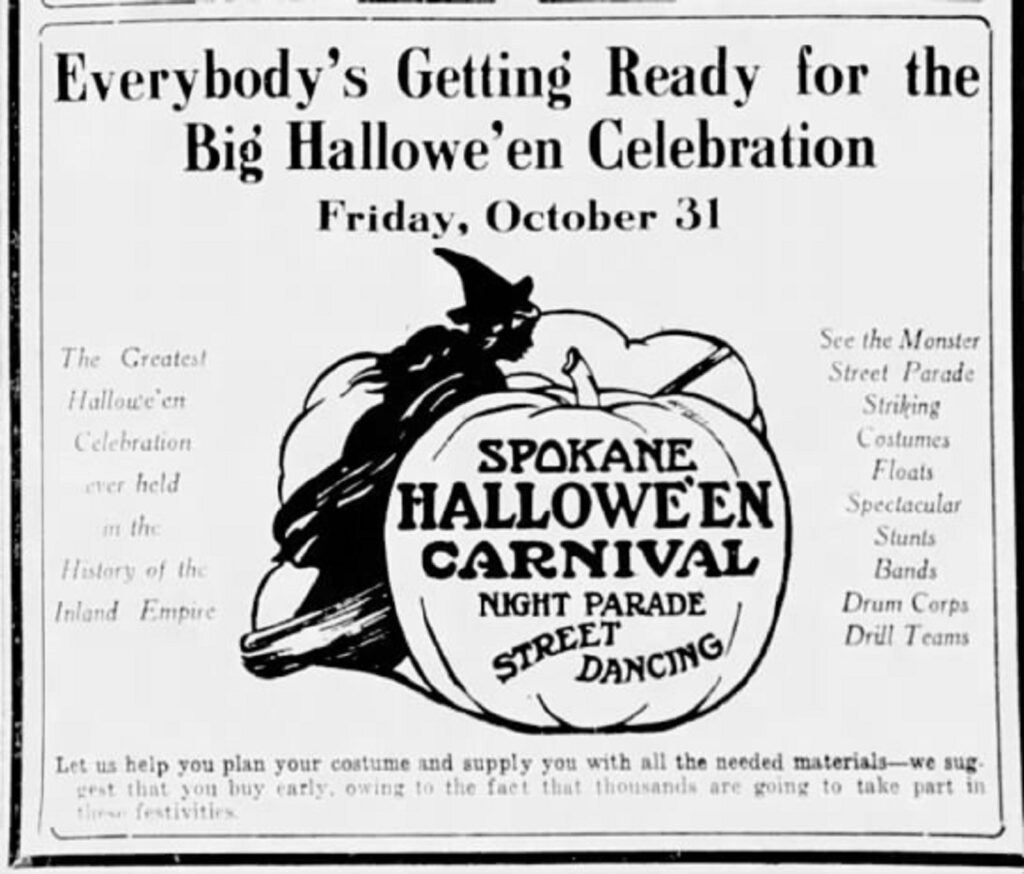
Early Halloween Tricks Not Treats in Spokane
While many held quiet parties, the holiday was mainly seen as a night of pranks and vandalism in the early 1900s. People, especially young boys, spent the night terrorizing the neighborhood.
While children might look forward to these escapades, the holiday was dreaded by adults who had to clean up the mess (and pay for repairs). “Tonight is Hallowe’en,” warned the Spokane Chronicle in 1894. “All peaceful and harmless citizens are warned to take their front gates indoors, lock up their carriages, tie down their coal sheds and chicken coops and turn loose the bulldog as the city will not be responsible for the damages.” That year’s 8 o’clock curfew for children proved as ineffective as this warning.
Popular pranks listed in the newspapers included tipping over outhouses, stealing signs, tearing down fences, soaping windows (which made them look ghostly) and scattering woodpiles. Some of this wildness inevitably got out of hand and a few boys (and adults) were arrested each year. While the police chief LeRoy Walker could promise in 1906 that “we are determined to stamp out hoodlumism” even his 20 specially sworn-in extra officers could not stop everything, as calls poured into headquarters from across the city.
One dangerous popular prank was greasing streetcar lines. In 1907, two boys were arrested for greasing the track on the downgrade on 5th Avenue between Post and Wall Streets. Another group of boys stole red lanterns from sewer excavations in 1905 in order to watch the streetcars run them over.
Officials put their feet down during World War II. The ten o’clock curfew was not lifted and officials warned that adults in masks near buildings would be arrested and that all property destruction would be considered sabotage. Vandalism continued to decrease after the war.
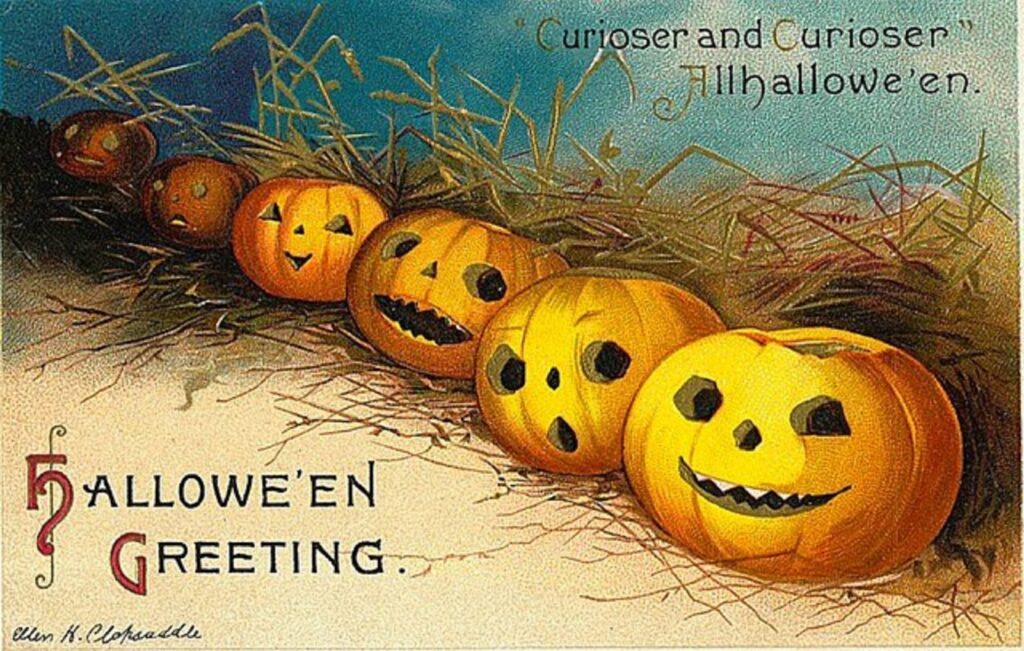
Community Halloween Parade
But things were already starting to change in Spokane. Trick-or-treating began in the 1920s and became more popular over time. In 1924 the city of Spokane held its first Halloween parade. This “spook night procession” was held into the 1950s. Thousands of children and their families participated in or watched the downtown parade on Halloween.
The first parade was even filmed by the International News Service. Each year dozens of clubs, businesses and groups dressed up for the event and entered elaborately decorated floats. School marching bands and drill teams performed. The parade was covered by a local radio station (KHQ) in 1925. President Coolidge was even invited to speak at the parade that same year but did not attend. The Manito Lions Club continued a children’s parade for many years after the city parade ended.
A Spokane Halloween Party
While their rambunctious children and neighbors were out wrecking the town, clubs, lodges, churches and friends held Halloween parties for both young and the young-at-heart. The Spokane Chronicle described a charming party put on by the Georgie Stone dancing academy for 150 students in 1902. The main room was decorated with silhouettes of witches and ghosts. The children munched on doughnuts and drank apple cider in an annex filled with glowing jack-o-lanterns. Older students at Spokane University held a bonfire party in 1913 with ghost stories and games. Other groups held dances. The Royal Neighbors, for example, held a “ghost dance” at Columbia Hall in 1907, during which guests wore sheets and pillowcases to look like ghosts.
Sometimes businesses put on their own Halloween parties. For example, the Monterey Roller Rink (816 West 4th) hosted a Halloween masquerade in 1921. The rink gave prizes for the best male and female comics and the best-sustained character portrayal. Fred T. Ray performed a special skating act and the Monterey orchestra provided live music.
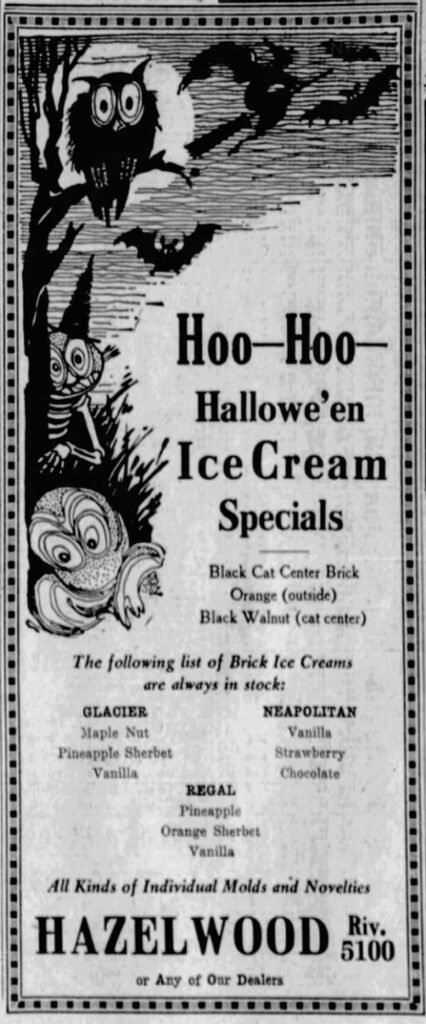
Changing Ideas of How to Celebrate Halloween
For those planning a party, there were plenty of ideas and things to buy. Pumpkins have long been associated with the holiday. “Pumpkins for the youngster who places Hallowe’en next to Christmas,” celebrated the Spokane Chronicle in 1916 “as the most important day of the year, are features of all the vegetable counters today.”
Stores catered to Halloween shoppers, especially bakeries. Bake-Rite sold “doughnuts for Halloween hot every minute” in 1921 at its three locations. After all, “no Hallowe’en party is complete without a generous supply of donuts” claimed the Bakitchen in 1947. Ice cream was another popular option. Sengfelder’s offered ice cream molded to look like pumpkins in 1907. Offerings had gotten more elaborate by 1926 when Hazelwood’s offered ice cream bricks with dyed black cat centers.
Those looking to make Halloween treats themselves did not have to search far. Newspaper home-advice columns regularly published festive recipes. Even ordinary food could take a Halloween theme. The Spokane Chronicle published a “masquerade menu” in 1912 that included “sunken treasure” (fried oysters) and “chills” (ice cream) served with witch’s brew (coffee). A cheaper option included “cauldron compound” (curry of chicken), “Eve’s Market List” (apple salad) and “cold shivers” (Jello with whipped cream). Guests could also enjoy individual “cups of destiny” or alphabet soup spelling fortunes such as “wealth” or “travel.”
Halloween is still a popular holiday today, enjoyed by many people. From trick-or-treating to parties or however you may choose to celebrate, here’s wishing you a Happy Halloween Spokane!

